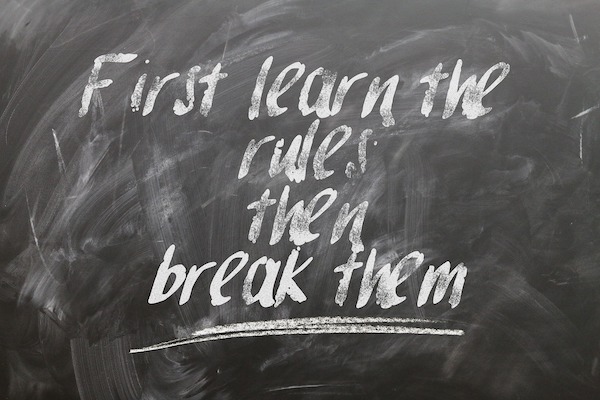- October 31, 2019
- Posted by: andreag
- Category: High PerformanceInnovationInternal ImprovementLeadershipPerformance ManagementSystems-Process-Improvement

Bill is diving into a new series in our blogs. His topic: Leadership. Here in post 1, he tackles Policy Setting.
My take is that, if given a choice, we humans prioritize avoiding harm over taking a risk that could bring success. For example, refusing to ask out the popular ladies in my youth for fear of rejection prevented me from potential relationships with said ladies. There are those who have no fear of rejection and seek to go for it, but I sense they are in the minority.
In the workplace, there is the old adage that it is better to ask for forgiveness than permission. Go ahead, make the decision and break the rule. You hear this in an organizational culture that retards innovation by sending a message that following policy and procedure is the highest priority. Very few leaders send the message that they are willing to invest, e.g. lose money, on mistakes in order to gain innovation and improvement.
 We see this often when working with process improvement teams using our Process Advantage® methodology. Teams tend to insert rules that don’t actually exist preventing them from trying new methods. It is as if “the way we have always done it” is a rule, when, in fact, it is not. Our consultants frequently have to interject to free the group from these supposed rules.
We see this often when working with process improvement teams using our Process Advantage® methodology. Teams tend to insert rules that don’t actually exist preventing them from trying new methods. It is as if “the way we have always done it” is a rule, when, in fact, it is not. Our consultants frequently have to interject to free the group from these supposed rules.
Fear of mistakes also plays out in how organizational structures and policies are established. It leads to lack of delegation of authority slowing decision making and problem solving, increasing costs (more managers are needed) and negatively impacting morale.
In policy setting, one employee mistake can lead to a new rule designed to prevent that mistake from ever happening again. Examples include requiring sign off of manager(s) on a decision, not being able to use company credit cards, not being able to use company vehicles, limitations on entertainment expenses and innumerable policies that dictate how things are to be done rather than leaving the “how” to the judgement of the person responsible for a given result.
Yet, planning, problem solving and design of methods are best done by those doing the work. So, limiting the ability of workers to design and implement change or have access to resources puts the skids on performance improvement. Such limits also go against the trends among employees who are increasingly seeking to make a difference vs. having a job or security. Today’s workers are gravitating to organizational cultures that afford them the freedom to make a difference.
The net effect of leadership styles that limit independence and innovation is that the rules and policies are defined based on protecting the organization from a few bad apples at the expense of enabling the majority of employees to contribute all that they can. The thinking is, “we can’t allow this to happen again”, so a rule gets defined and implemented. Hence, the majority are ruled by the poor performance of the minority.
The mistake that leadership makes is to use rule setting rather than good performance management to prevent potentially costly mistakes. Rule-making is often the wrong solution and negatively impacts performance.
Finding Balance
Teams are defined by their purpose, their common goal and by a set of policies that govern how work is to be done. The best teams limit the number of policies while demanding strict adherence to them. So, I am not advocating anarchy or no rules. I am advocating that you find the balance between rules needed to properly define and guide a team, and those that have the effect of limiting the potential performance of the team.
For example, if a football coach imposed a rule that the quarterback could not call audibles (i.e. change the play based on what defense he sees when the teams line up) this could lose the game for the team. Such a rule might make sense for a rookie quarterback, but should be abandoned when the quarterback has gained the knowledge to be able to make the correct calls.
In policy setting, it is important to ask the following:
- Do I need a rule to govern this area or can the “what” or “how” be left to common sense, i.e., would the majority of those doing the work make the right decision on their own? Am I imposing a rule because of an incident or a “bad apple”?
- What is the impact or cost of a mistake?
- Should the problem be dealt with through performance management/supervision instead of policy setting?
- What is the theory underlying my policy, meaning, if I require that this rule be followed what will be the positive impact upon the organization? An example might be that a dress code is based on the theory that proper dress shows respect for customer.
Inform your team that you want to hear from them if they believe that a given policy is a) based on theory that is no longer relevant or b) is having a negative impact on innovation/problem solving and therefore performance. Encourage dialogue re. what policies aid the team in being consistent and high quality and which are limiting potential. Use this dialogue to find the right balance for your organization.



